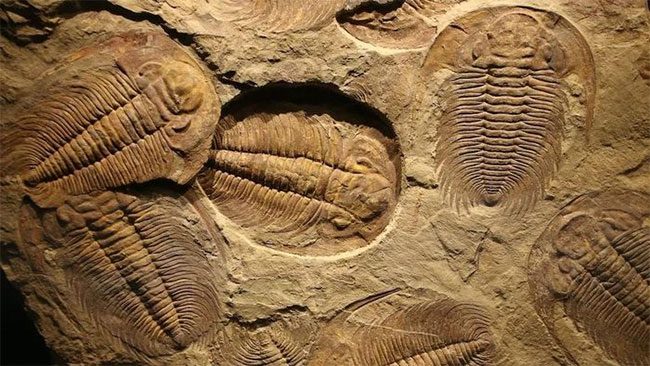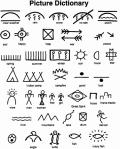New research reveals that trilobites, a group of now-extinct marine arthropods, possessed a hidden third eye—and in some cases, a fourth or fifth eye.

A series of trilobite fossils embedded in sediment.
Paleontologists have long known that, like other arthropods such as insects and spiders, these prehistoric marine creatures with hard shells had a pair of compound eyes that were present during the Paleozoic Era (541 million to 252 million years ago).
However, scientists have recently discovered a third eye located between the eyes of these long-extinct creatures—a feature common in today’s arthropods, according to a study published on March 8 in the journal Science Report.
Previously, scientists believed that the third eye was a characteristic of the larval stage of the organism, indicating this phase of its life. Researchers stated in a press release that these eyes are located beneath a transparent layer of the shell, which became opaque during the fossilization process, meaning the third eye was essentially hidden within the ancient fossils.
The statement noted that when researchers examined a specimen of the species Aulacopleura koninckii with a partially missing head, they found three small, oval, indistinct, dark spots of the same size located at the front of the head.
Brigitte Schoenemann, the lead author of the study and a professor at the Institute of Zoology at the University of Cologne in Germany, stated: “The regular and distinct appearance of these spots allows us to differentiate this structure from random formations created by decomposition or fossilization processes, and it corresponds to the expected remnants of simple intermediate eyes equipped with a layer of pigment. Even if it is just a single discovery, it reinforces the hypothesis that trilobites originally had intermediate eyes.”
At various points throughout evolution, trilobites may have had from one to multiple eyes in the center. For example, researchers found that Cyclopyge sibilla trilobites possessed three central eyes equipped with lenses similar to human eyes, and Cindarella eucalla had four eyes. Today, most species of modern insects and crustaceans have three central eyes.





















































